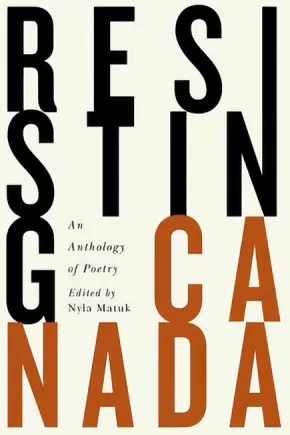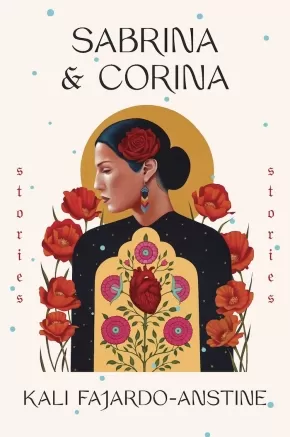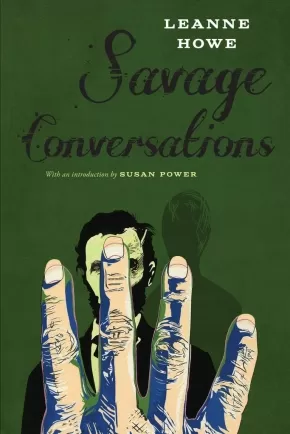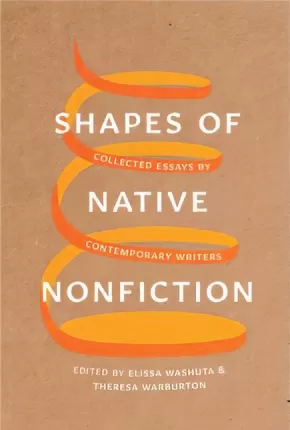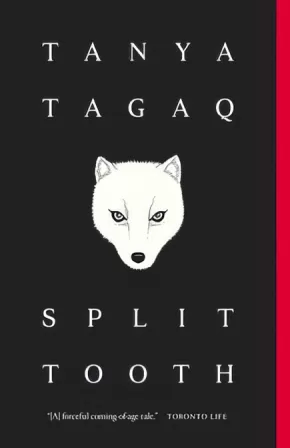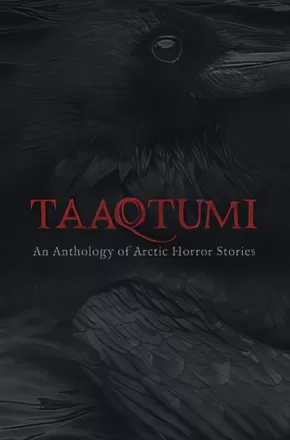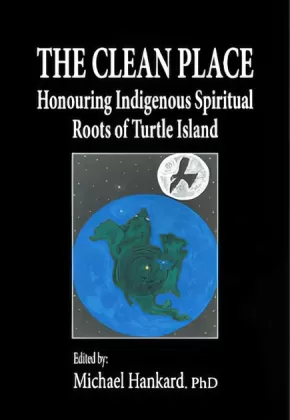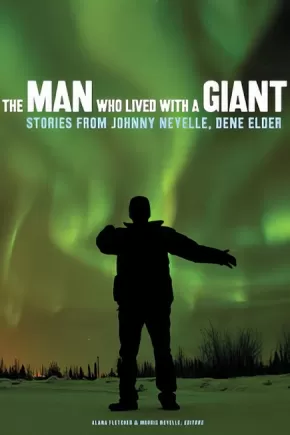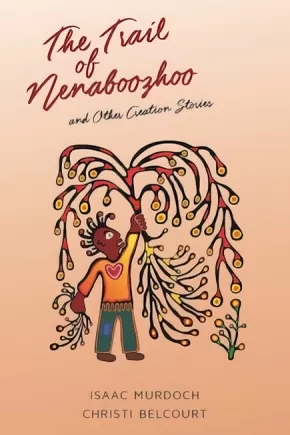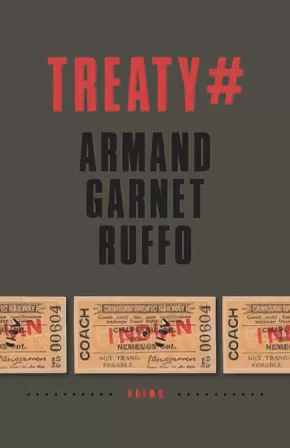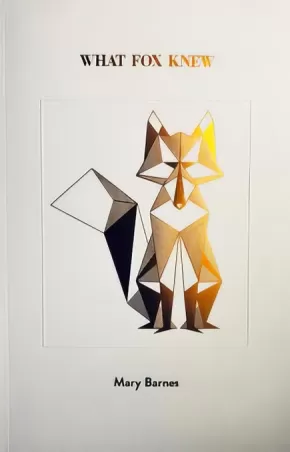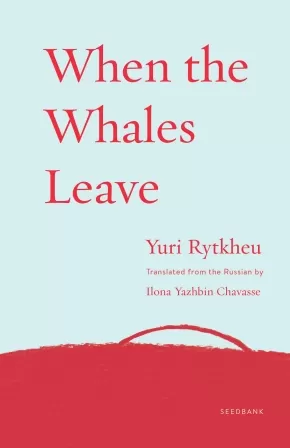Literary Studies
Synopsis:
A poetic letter to Canada's politicians and leaders.
Resisting Canada gathers together poets for a conversation bigger than poetic trends. The book's organizing principle is Canada--the Canada that established residential schools; the Canada grappling with the Truth and Reconciliation Commission; the Canada that has been visible in its welcome of Syrian refugees, yet the not-always-tolerant place where the children of those refugees will grow up; the Canada eager to re-establish its global leadership on the environment while struggling to acknowledge Indigenous sovereignty on resource-rich land and enabling further colonization of that land. In the face of global conflicts due to climate change, scarcity, mass migrations, and the rise of xenophobic populisms, Canada still works with a surface understanding of its democratic values--both at their noblest and most deceptive.
The work included in Resisting Canada--by celebrated poets such as Lee Maracle, Jordan Abel, Billy-Ray Belcourt, Louise Bernice Halfe, Michael Prior, and Leanne Betasamosake Simpson--addresses, among other things, Indigenous agency, cultural belonging, environmental anxieties, and racial privilege. These poems ask us to judge and resist a statecraft that refuses to acknowledge past and present wrongs. Think of Resisting Canada as a poetic letter to Canada's politicians and leaders.
Additional Information
280 pages | 5.00" x 7.50"
Synopsis:
Latinas of Indigenous descent living in the American West take center stage in this haunting debut story collection—a powerful meditation on friendship, mothers and daughters, and the deep-rooted truths of our homelands.
“Here are stories that blaze like wildfires, with characters who made me laugh and broke my heart.”—Sandra Cisneros
Kali Fajardo-Anstine’s magnetic story collection breathes life into her Latina characters of indigenous ancestry and the land they inhabit in the American West. Against the remarkable backdrop of Denver, Colorado—a place that is as fierce as it is exquisite—these women navigate the land the way they navigate their lives: with caution, grace, and quiet force.
In “Sugar Babies,” ancestry and heritage are hidden inside the earth but tend to rise during land disputes. “Any Further West” follows a sex worker and her daughter as they leave their ancestral home in southern Colorado only to find a foreign and hostile land in California. In “Tomi,” a woman leaves prison and finds herself in a gentrified city that is a shadow of the one she remembers from her childhood. And in the title story, “Sabrina & Corina,” a Denver family falls into a cycle of violence against women, coming together only through ritual.
Sabrina & Corina is a moving narrative of unrelenting feminine power and an exploration of the universal experiences of abandonment, heritage, and an eternal sense of home.
Reviews
“Sabrina & Corina isn’t just good, it’s masterful storytelling. Fajardo-Anstine is a fearless writer: her women are strong and scarred witnesses of the violations of their homelands, their culture, their bodies; her plots turn and surprise, unerring and organic in their comprehensiveness; her characters break your heart, but you keep on going because you know you are in the hands of a master. Her stories move through the heart of darkness and illuminate it with the soul of truth.”—Julia Alvarez, author of How the García Girls Lost Their Accents
“[A] powerhouse debut . . . stylistically superb, with crisp dialogue and unforgettable characters, Sabrina & Corina introduces an impressive new talent to American letters.”—Rigoberto González, NBC News
“A terrific collection of stories—fiercely and beautifully made.” —Joy Williams
“Here are stories that blaze like wildfires, with characters who made me laugh and broke my heart, believable in everything they said and did. How tragic that American letters hasn’t met these women of the West before, women who were here before America was America. And how tragic that these working-class women haven’t seen themselves in the pages of American lit before. Thank you for honoring their lives, Kali. I welcome them and you.”—Sandra Cisneros
“In the eleven stories of Sabrina & Corina, Fajardo-Anstine writes a love letter to the Chicanas of her homeland—women as unbreakable as the mountains that run through Colorado and as resilient as the arid deserts that surround it. . . . In her fierce, bold stories, these women—and she—are seen, and heard, and made known; the collection is both a product of pain and a celebration of survival. . . . Like the woman on Sabrina & Corina’s cover, the hearts of these characters are exposed but intact. Fajardo-Anstine's heart is there on the page, too, beating with the blood of her ancestors.”—Bustle
“Sabrina & Corina summons a world we hardly recognize, but should. . . . Fajardo-Anstine can make a story smell of sickness. She can make legend of malediction. Conjuring the Sangre de Cristo Mountains, and unfurling the Denver skyline, there is no limit to what Fajardo-Anstine can manifest on paper and, subsequently, in our dreams. Yet, what is most admirable is the courage of her hand. She’s unafraid to delve into areas of race, feminism, queerness, and class. She interrogates whiteness, and its associations like passing and colorism, prodding unapologetically.”—Electric Literature
“In [Sabrina & Corina] we find a different narrative of the West. These are women who inhabit a space between the Indigenous and the Latinx; they are fierce [and] powerful in their own way.”—Brooklyn Rail
Additional Information
224 pages | 5.73" x 8.56"
Synopsis:
May 1875: Mary Todd Lincoln is addicted to opiates and tried in a Chicago court on charges of insanity. Entered into evidence is Ms. Lincoln’s claim that every night a Savage Indian enters her bedroom and slashes her face and scalp. She is swiftly committed to Bellevue Place Sanitarium. Her hauntings may be a reminder that in 1862, President Lincoln ordered the hanging of thirty-eight Dakotas in the largest mass execution in United States history. No one has ever linked the two events—until now. Savage Conversations is a daring account of a former first lady and the ghosts that tormented her for the contradictions and crimes on which this nation is founded.
Reviews
"In Savage Conversations, LeAnne Howe experiments with the form of verse drama to tell the history of the Dakhóta resistance to colonization and the mythos surrounding the Lincoln presidency of that same period. The setting is the asylum to which Mary Todd Lincoln was involuntarily committed ten years after the death of her husband. The characters are the First Lady, whose racism against Native Americans is well-documented, the “Savage Indian” she claims to see and be tortured by nightly, and a rope. The story is a reckoning of hauntings and unprosecuted crimes, an attempt at imagining some way to live with an unbearable history of human rights abuses and genocide." - Kathryn Nuernberger, Kenyon Review
“In May of 1875, Mary Todd Lincoln is confined to an insane asylum. There, she is haunted by a ‘Savage Indian’ who scalps her nightly and sews her eyes open. In Howe's telling, the specter haunting the widowed First Lady is one of the thirty-eight Dakota men, hanged in 1862 by her husband in the largest mass execution in American history. In reading this, I was blown away. Unmoored. Sent spiraling adrift on gusts of wind.” —Rachel S, Harvard Book Store
“Part fever dream, part extended meditation on madness, Howe’s Savage Conversations is a bracing commentary on the nature of guilt and grief.”—Historical Novel Society
“Savage Conversations takes place somewhere in between its sources, between sanity and madness, between then and now, between the living and the dead. It pushes past the limitations of textual sources for telling indigenous history and accounts of insanity.”—Barrelhouse Reviews
“LeAnne Howe’s words are to savor, contemplate, and horrify. Savage Conversations explodes with the stench of guilt and insanity that undergirds the American story, whispered through a personal, familial, national, and supernatural drama revelatory in every sense. Howe’s uncanny images will long haunt readers, just as the Dakota 38 linger in land and memory, both offering a testament to the violent entanglements of past and present.” —Philip J. Deloria
“Savage Conversations invokes our own racial conflict and probes America’s psyche, its struggle to reconcile its colonialist values, indeed its white supremacy, with its multi-ethnic cultures and populations. . . . Through the masterly dramatic management of Mrs. Lincoln’s disturbing and chilling obsessions, Howe shows that there is no escape from the yesterday’s paradigms of power without a true reckoning with the injustices that set the stage for our troubled social landscape.”—On the Seawall
“Howe’s book powerfully contributes to our understanding and re-thinking of a moment in time that we are still grappling with today. In the wake of recent movements to remove Confederate monuments as we work to present the truths of history, Howe’s book directs our attention to a violent event that has not been adequately acknowledged. Through experimental form, Howe refracts a moment of history that readers simply cannot forget, that they will inevitably carry with them long after reading the last page.” —The Carolina Quarterly
Educator Information
Experimental verse drama.
Additional Information
144 pages | 5.00" x 7.50"
Synopsis:
Just as a basket’s purpose determines its materials, weave, and shape, so too is the purpose of the essay related to its material, weave, and shape. Editors Elissa Washuta and Theresa Warburton ground this anthology of essays by Native writers in the formal art of basket weaving. Using weaving techniques such as coiling and plaiting as organizing themes, the editors have curated an exciting collection of imaginative, world-making lyric essays by twenty-seven contemporary Native writers from tribal nations across Turtle Island into a well-crafted basket.
Shapes of Native Nonfiction features a dynamic combination of established and emerging Native writers, including Stephen Graham Jones, Deborah Miranda, Terese Marie Mailhot, Billy-Ray Belcourt, Eden Robinson, and Kim TallBear. Their ambitious, creative, and visionary work with genre and form demonstrate the slippery, shape-changing possibilities of Native stories. Considered together, they offer responses to broader questions of materiality, orality, spatiality, and temporality that continue to animate the study and practice of distinct Native literary traditions in North America.
Reviews
"In this anthology, shape matters. It turns the essay into a resistant form, pushing against the myth of the ‘disappearing Native’ and asserting a new narrative, one that isn’t subject to colonizing. . . . Shapes of Native Nonfiction is full of cognitive and emotional work. It turns the essay into something alive and breathing." - Cincinnati Review
"The medium is the message in this formally daring anthology of essays from Native writers, organized into basket-weaving themes such as ‘coiling’ and ‘plaiting.’ In these 27 essays by writers hailing from multiple tribal nations, some established and some newcomers, the Native experience is interrogated, elucidated, and celebrated." - Esquire
"In gathering contemporary Native nonfiction, this book elucidates the roots of the form-conscious essay and brings together the exciting current work of Native writers. In a sweeping decolonizing gesture, this anthology challenges the nonfiction canon as it’s been taught and creates a porous new space in its place." - Essay Daily
"Shapes of Native Nonfiction is. . . an accessible, engaging book, both for those who have read widely on the subject and for those seeking a place to begin." - New York Journal of Books
"This new collection of essays from established and emerging contemporary Indigenous writers is stunning both in-depth and scope. . . . The collection, expertly curated and structured by writer and Cowlitz Indian Tribe member Elissa Washuta (whose incredible essay Apocalypse Logic also appears here) and literary scholar Theresa Warburton, shines in every piece and in its existence as a whole. . . . In these pages, storytelling is a way of developing new Native nonfiction literary possibility." - Literary Hub
"Shapes of Native Nonfiction introduces the reader to a unique collection of voices, telling stories that shift from lost to living language, from history to lived experience. These shifts create new shapes for Indigenous writers to inhabit, explore and share. In this anthology, that shaping makes for a powerful read, and an absolutely necessary one" - High Country News
"In this far-ranging collection of essays, Indigenous writers explore family, home, landscape, identity, trauma, history, and memory. Some of the essays are about writing itself. Others tell stories about particular experiences or moments. Still others are more outwardly focused, exploring art, culture, and politics. Part of what makes this book so unique is the various innovative forms the essays take." - Book Riot
Additional Information
302 pages | 6.00" x 9.00" | Paperback
Synopsis:
From the internationally acclaimed Inuit throat singer who has dazzled and enthralled the world with music it had never heard before, a fierce, tender, heartbreaking story unlike anything you've ever read.
Fact can be as strange as fiction. It can also be as dark, as violent, as rapturous. In the end, there may be no difference between them.
A girl grows up in Nunavut in the 1970s. She knows joy, and friendship, and parents' love. She knows boredom, and listlessness, and bullying. She knows the tedium of the everyday world, and the raw, amoral power of the ice and sky, the seductive energy of the animal world. She knows the ravages of alcohol, and violence at the hands of those she should be able to trust. She sees the spirits that surround her, and the immense power that dwarfs all of us.
When she becomes pregnant, she must navigate all this.
Veering back and forth between the grittiest features of a small arctic town, the electrifying proximity of the world of animals, and ravishing world of myth, Tanya Tagaq explores a world where the distinctions between good and evil, animal and human, victim and transgressor, real and imagined lose their meaning, but the guiding power of love remains.
Haunting, brooding, exhilarating, and tender all at once, Tagaq moves effortlessly between fiction and memoir, myth and reality, poetry and prose, and conjures a world and a heroine readers will never forget.
Awards
- Winner of the 2019 Indigenous Voices Awards for Published Prose in English.
- Winner of the 2018 Alcuin Society Awards for Excellence in Book Design – Prose Fiction
Reviews
“Tagaq’s surreal meld of poetry and prose transmutes the Arctic’s boundless beauty, intensity, and desolation into a wrenching contemporary mythology.” –The New Yorker
“Though the protagonist’s coming-of-age story, generously and lovingly documented by Tagaq, is the anchor, Split Tooth is not a book that can be fully absorbed in one sitting. It’s possible to sink deeper and deeper into the narrative with each successive reading. Like a smirking teenager, Split Tooth blithely gives typical literary expectations the finger, daring us to see and experience narrative as chaotic, emotional, and deeply instinctive. And it succeeds.” –Quill and Quire
“Tanya’s book is one of the most incredible things I’ve ever read. It’s deeply profound, emotional and personal, and furthers her artistic experimentation and genius into a new realm. I love her even more after reading it, and I’m once again awed by her talent.” –Jesse Wente, CBC Broadcaster
"[A] forceful coming-of-age tale.” –Toronto Life magazine
Additional Information
|
Synopsis:
“Taaqtumi” is an Inuktitut word that means “in the dark”—and these spine-tingling horror stories by Northern writers show just how dangerous darkness can be. A family clinging to survival out on the tundra after a vicious zombie virus. A door that beckons, waiting to unleash the terror behind it. A post-apocalyptic community in the far North where things aren’t quite what they seem. These chilling tales from award-winning authors Richard Van Camp, Rachel and Sean Qitsualik-Tinsley, Aviaq Johnston, and others will thrill and entertain even the most seasoned horror fan.
Educator & Series Information
Includes stories from northern Indigenous authors.
This book is part of the Taaqtumi series.
Additional Information
260 pages | 6.00" x 9.00" | b&w illustrations
Synopsis:
Beth Piatote's luminous debut collection opens with a feast, grounding its stories in the landscapes and lifeworlds of the Native Northwest, exploring the inventive and unforgettable pattern of Native American life in the contemporary world.
Told with humor, subtlety, and beautiful spareness, the mixed-genre works of Beth Piatote's first collection find unifying themes in the strength of kinship, the pulse of longing, and the language of return.
A woman teaches her niece to make a pair of beaded earrings while ruminating on a fractured relationship. An eleven-year-old girl narrates the unfolding of the Fish Wars in the 1960s as her family is gradually drawn to the front lines of the conflict. In 1890, as tensions escalate at Wounded Knee, two young men at college—one French and the other Lakota—each contemplate a death in the family. In the final, haunting piece, a Nez Perce/Cayuse family is torn apart as they debate the fate of ancestral remains in a moving revision of the Greek tragedyAntigone.
Formally inventive, witty, and generous,The Beadworkers, a singular debut collection, draws on Indigenous aesthetics and forms to offer a powerful, sustaining vision of Native life in the Americas.
Reviews
"Beth Piatote has created a ritual of clarity, transformation, and wonder. Elegant and vivid, her book is alive, and it will make its readers see the world in a bright new light. I can't recommend it highly enough." —Luis Alberto Urrea, author of The House of Broken Angels
"Piatote is Nez Perce, and a Native American Studies professor at UC Berkeley. In this eloquent and elucidating debut story collection she brings the Native experience to life—from the long line of broken treaties and the tragic effect on Native tribes from coast to coast to contemporary repercussions from forced attendance at Indian boarding schools . . . Piatote draws the reader in with spare and perceptive language and resonate empathy for each struggling yet resilient character." —Booklist
"Piatote’s debut collection mixes poetry, verse, and prose to form an impressive reflection on the lives of modern Native Americans. Piatote, a Nez Perce enrolled with the Colville Confederated Tribes, fits much nuance and profundity into stories that often reflect on the ways in which contemporary mainstream American culture continues to erase the identities and traditions of indigenous groups . . . This beautiful collection announces Piatote as a writer to watch." —Publishers Weekly
"Hope and heartbreak abound in this debut collection set among Native Americans in the northwest . . . Piatote balances the emotional complexities of her characters' lives with the political complexity of their relationship with an America all too eager to look away. A poignant and challenging look at the way the past and present collide." —Kirkus Reviews
"The Beadworkers is beautifully crafted with indigenous storytelling techniques and narrative designs. Throughout, Beth Piatote renders Native American life in all its emotional complexity, profound tragedy, subversive humor, and transformative resilience. After the final drum beat, this book becomes an offering to ancestors, a feast of words, and a water song flowing across generations." —Craig Santos Perez, author of from unincorporated territory [lukao]
"The Beadworkers is an essential celebration of language, kinship, and the enduring power of story. In an exhilarating diversity of voices and literary forms, and with extraordinary heart and artistic precision, this book moves, teaches, and surprises. Beth Piatote is a writer to cherish and trust." ––David Chariandy, author of I've Been Meaning to Tell You
"Beth Piatote's incisive debut eschews the boundaries of genre so as to paint a polyphonic image of Indigenous life past and present.The Beadworkers reveals a writer who deeply understands the norms that govern Indigenous aesthetics, a writer who navigates the choppy waters of representation expertly, nuancing and complicating as she goes with an intellectual and narrative bravery that inspires. This is an important addition to a new wave of Indigenous writing in North America!" ––Billy-Ray Belcourt, author of NDN Coping Mechanisms andThis Wound is a World
“I loved it! It was like an adventure into Indian Thinking. Beth Piatote weaves characters, myths, emotions, and elements together like she is weaving a fine Plateau cornhusk bag. The stories engage your senses, emotions, and memories like a trip to the reservation. I knew I wanted to read this book again before I was even halfway through! I could feel the wind from the river, and I could smell the fragrance of freshly picked huckleberries on a warm summer day by reading her words and going to her places in the book. I could identify with some characters, and other familiar characters resounded with me to the point that it felt like this book was written just for me. I think a lot of people could get that feeling from reading this book." ––Marcus Amerman, traditional beadworker
Additional Information
208 pages | 5.50" x 8.25"
Synopsis:
Within Turtle Island Indigenous people know that its spiritual centre is the ultimate mover within everything we do and are surrounded by. The Clean Place: Honouring Indigenous Spiritual Roots of Turtle Island illuminates the strong connection Indigenous people have with the land and the importance of a paradigm shift worldwide toward sustainable ways of thinking and being. The voices and perspectives of the writers weave traditional teachings, spirituality, and messages of hope, change, and transformation.
Reviews
"Hankard’s compilation takes us on a journey throughout Turtle Island and beyond, across sacred oceans to the ancestral homelands of our relatives. This journey illuminates a connecting theme of Indigenous existence on, from and with the land as a sacred being. Upon a shared reading of a chapter with my son, it was clear he embodied the teachings within – he was doing his part in maintaining the Clean Place." - Cindy Peltier, PhD, Chair Indigenous Education Nipissing University
Educator Information
Table of Contents
Dedication
Acknowledgement
Gchi-Biimskogaabiwiding
Introduction
Michael Hankard
1. I Still Have the Place
Lorraine Rekmans
2. Unsettling the Clean Place: Beginnings of a Philosophical Reflection
Réal Fillion
3. Giving Thanks for the Light
Ross Hoffman
4. In Place and Time: Indigenous Women’s Re-Weaving and Resistances
Laura Hall
5. The Healing Journey: Spirituality, Cultural Connection and the Significance of Aboriginal Peoples Relationship to the Land
John E. Charlton & John G. Hansen
6. Honouring Papatuanuku: Honouring Mother Earth
Taima Moeke-Pickering
7. Stewards of the Sacred
Cynthia Landrum
8. A Buffalo’s Breath on a Cold Winter Morning
Michael Hankard
9. Wahi Pana: A Hawaiian Sense of Place and Relationship to the Land
Umi Perkins
10. The Land is One with Us, and We are One with the Land: A Personal Journal
Emily Faries
11. Caring for Past/Present/Future Through Anishinabe Photography on the Land
Celeste Pedri-Spade
12. Washed ‘Clean’ in Zimbabwe: The Dzivaguru Creation Story
Collis G. Machoko
13. Reflections on Urban Connections to Land and Ceremony: Uncovering the Virtues of Creativity, Cultural Resiliency, Flexibility and Tenacity
Barbara Waterfall
14. Biinidsa: Going Home to Clean Up
Kevin FitzMaurice
Epilogue: Clean Water in the ‘Clean Place’?
Maurice Switzer
About the Authors
Additional Information
251 pages | 6.00" x 9.00"
Synopsis:
Our parents always taught us well. They told us to look on the good side of life and to accept what has to happen.
The Man Who Lived with a Giant presents traditional and personal stories told by Johnny Neyelle, a respected Dene storyteller and Elder from Déline, Northwest Territories. Johnny Neyelle used storytelling to teach Dene youth and others to understand and celebrate Dene traditions and identities. Johnny’s entertaining voice makes his stories accessible to readers young and old, and his wisdom reinforces the right way to live: in harmony with people and places. Storytelling forms the core of Dene knowledge-keeping. A volume dedicated to making Dene culture strong, The Man Who Lived with a Giant is a vital book for Dene readers, researchers working with Indigenous cultures and oral histories, and scholars preserving Elders’ stories. Even more, it is a book for the Dene people of today and tomorrow.
Additional Information
152 pages | 6.00" x 9.00"
Synopsis:
Nenaboozhoo left us many gifts.
Nenaboozhoo, the creator spirit-being of Ojibway legend, gave the people many gifts. This collection of oral stories presents legends of Nenaboozhoo along with other creation stories that tell of the adventures of numerous beloved animal spirits. The Trail of Nenaboozhoo is a book of art and storytelling that preserve the legends of the Anishinaabe people. Each story is accompanied by strikingly beautiful illustrations by revered Indigenous artists Isaac Murdoch and Christi Belcourt.
Educator & Series Information
From the Forward, by Isaac Murdoch:
"Everything we have can be accredited to the gifts from the spirit world. As we are now in abrupt climate change we can see the world-wide ecological collapse happening before our very eyes. How important was the birch bark canoe? The wigwam? How important were those gifts that were given to us? I think they were very important. They were more than important; they were sacred.
And so its with great hopes and encouragement that I offer these stories as a map to understand how to go back to the old ways. The old people always said we are going to go back to the old ways and I truly believe the time is now. We mustn’t wait.
Nenaboozhoo is a spirit that was brought to the earth who is highly respected to this day by my people. They say when he was in spirit form he went through four levels of power. Through each power he went through he went back to the centre saying he didn’t want to leave. But the Great Mystery told him, “'keep going, keep going, you’re needed somewhere.'
And he made his way through those four powers and ended up on earth. His life here on earth was magical. All the rivers, all of the mountains all of the beautiful colours that we see, were created with Nenaboozhoo and his magical trail on earth. They say one day ten men will go fasting and call Nenaboozhoo back and the world will be new again.
Nothing can stop the power that is here."
This book is part of the Ojibwe History Series.
Recommended in the Canadian Indigenous Books for Schools 2020/2021 resource list for grades 7 to 12 for English Language Arts and Science.
Most stories appear in English and with an Anishinaabemowin translation, but some stories are in English only.
Additional Information
55 pages | 9.00" x 9.00" | 20 illustrations
Synopsis:
Here is a voice we have never heard--a voice full of poetry and rage, exploding onto the page with stunning urgency and force.
Here is a story of several people, each of whom has private reasons for travelling to the Big Oakland Powwow. Jacquie Red Feather is newly sober and trying to make it back to the family she left behind in shame. Dene Oxendene is pulling his life together after his uncle's death and has come to work at the powwow to honour his uncle's memory. Opal Viola Victoria Bear Shield has come to watch her nephew Orvil Red Feather, who has taught himself traditional Indian dance through YouTube videos and has come to the powwow to dance in public for the very first time. There will be glorious communion and a spectacle of sacred tradition and pageantry. And there will be sacrifice, and heroism, and unspeakable loss.
Fierce, angry, funny, heartbreaking, There There is a relentlessly paced multi-generational story about violence and recovery, memory and identity, and the beauty and despair woven into the history of a nation and its people. An unforgettable debut.
Reviews
“There There has so much jangling energy and brings so much news from a distinct corner of American life that it’s a revelation… its appearance marks the passing of a generational baton.” —The New York Times
“Each character is introduced and developed with a clear-eyed fidelity, empathic without sentimentality, our understanding increasing as connections are revealed, histories explored, gaps filled in. . . . At its core, There There is a novel about those gaps.” —Toronto Star
“Welcome to a brilliant and generous artist who has already enlarged the landscape of American fiction. There There is a comic vision haunted by profound sadness. Tommy Orange is a new writer with an old heart.” —Louise Erdrich, Birchbark Books
“A gripping deep dive into urban indigenous community in California: an astonishing literary debut!” —Margaret Atwood via Twitter
“There There is a miraculous achievement, a book that wields ferocious honesty and originality in service of telling a story that needs to be told. This is a novel about what it means to inhabit a land both yours and stolen from you, to simultaneously contend with the weight of belonging and unbelonging. There is an organic power to this book—a revelatory, controlled chaos. Tommy Orange writes the way a storm makes landfall.” —Omar El Akkad, author of American War
Educator Information
ERAC approved title for grades 11 and 12 literature circles around identity, overcoming adversity, or how the past shapes our lives. Social considerations noted; recommended for mature students.
Additional Information
304 pages | 5.64" x 8.51" | Paperback
Synopsis:
A treaty is a contract. A treaty is enduring. A treaty is an act of faith. A treaty at its best is justice. It is a document and an undertaking. It is connected to place, people and self. It is built on the past, but it also indicates how the future may unfold. Armand Garnet Ruffo's TREATY# is all of these. In this far-ranging work, Ruffo documents his observations on life - and in the process, his own life - as he sets out to restructure relationships and address obligations nation-to-nation, human-to-human, human-to-nature. Now, he undertakes a new phase in its restoration. He has written his TREATY# like a palimpsest over past representations of Indigenous bodies and beliefs, built powerful connections to his predecessors, and discovered new ways to bear witness and build a place for them, and all of us, in his poems. This is a major new work from an important, original voice.
Educator Information
Recommended in the Canadian Indigenous Books for Schools 2019-2020 resource list as being useful for grades 8 to 12 for English Language Arts and Social Studies.
Historical terms like "Indian" and "half-breed" are used in this work.
Additional Information
80 pages | 5.75" x 8.50"
Synopsis:
Wënchikàneit Visions is a collection of essays that explores the connection to place and history through the lens of absence, forgetfulness, and abandonment. The pieces and collection as whole turn to often overlooked physical spaces of the region around Waawiiyaatanong, and consider their central role in both its past and its future. The pieces are organized as visions occurring in regards to the moons from September (Hunters Moon) until February (Deep Snow Moon) and utilize traditional teachings and myths to contemplate these forgotten or abandoned places.
Additional Information
70 pages | 6.00" x 9.00"
Note: cover image may differ.
Synopsis:
"His voice was as thick as pine resin when he began to read and as the words travelled down my spine."
Mary Barnes has identified beauty in subtlety. What Fox Knew captures our gentle world in rich poems that calm and awaken. Amid landscape and truth, the quiet world we take for granted is revealed anew with tempered grace. Bringing her Ojibwe roots to the fore, the poet has constructed a first collection that settles on masterful.
Reviews
"What Fox Knew is a beautiful collection of poems that lead us to reflect on the essential spaces of beauty, justice, love, home and nation. Mary Barnes is the poet whose work I've been waiting to read; I had no idea how much until I read these poems. These are not quick poems; they are not desperate, or rushed. Barnes' poems are, to quote her, "thick as resin" and also gorgeously clear as amber in the light. --Juliane Okot Bitek
Additional Information
136 pages | 5.00" x 7.50"
Synopsis:
“Arguably the foremost writer to emerge from the minority peoples of Russia’s far north.” —New York Review of Books
Nau cannot remember a time when she was not one with the world around her: with the fast breeze, the green grass, the high clouds, and the endless blue sky above the Shingled Spit. But her greatest joy is to visit the sea, where whales gather every morning to gaily spout rainbows.
Then, one day, she finds a man in the mist where a whale should be: Reu, who has taken human form out of his Great Love for her. Together these first humans become parents to two whales, and then to mankind. Even after Reu dies, Nau continues on, sharing her story of brotherhood between the two species. But as these origins grow more distant, the old woman’s tales are subsumed into myth—and her descendants turn increasingly bent on parading their dominance over the natural world.
Buoyantly translated into English for the first time by Ilona Yazhbin Chavasse, this new entry in the Seedbank series is at once a vibrant retelling of the origin story of the Chukchi, a timely parable about the destructive power of human ego—and another unforgettable work of fiction from Yuri Rytkheu, “arguably the foremost writer to emerge from the minority peoples of Russia’s far north” (New York Review of Books).
Reviews
“We have so little intimate information about these Arctic people, and the writer’s deep emotional attachment to this landscape of ice (today melting away under global warming forces) makes every sentence seem a poetic revelation.”—Annie Proulx
“Rytkheu immerses his readers in the fantastical landscapes of the Arctic circle, and does so without breaking a sweat. . . . His elegant, unforced descriptive writing can whip us across leagues of tundra and thread the jagged icebergs studding hyperborean seas, but when the blizzards hit and the characters are trapped in their huts, we’re snowbound there with them under the whale-oil lamp, chewing walrus and hoping for respite.”—Bookslut
“Thousands of books have been written about the Arctic aborigines by intruders from the south. Rytkheu has turned the skin inside out and written about the way the Arctic people view outsiders. A Chukchi himself, [he] writes with passion, strength, and beauty of a world we others have never understood.”—Farley Mowat
Additional Information
136 pages | 5.50" x 8.50" | Translated by Ilona Yazhbin Chavasse

